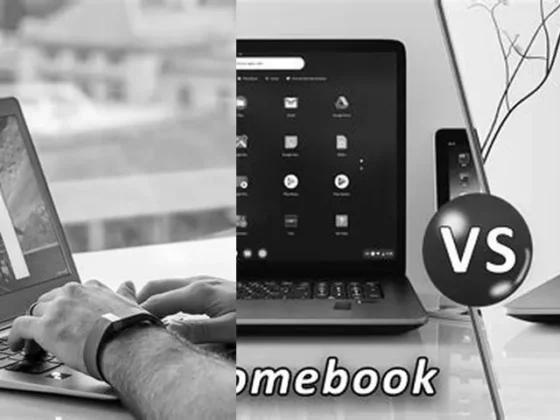How Can I Seamlessly Switch Between Tablet Mode in Windows 10? – Are you tired of struggling to navigate between tablet mode and keyboard mode on your Windows 10 device? Well, fret no more! In this blog post, we will unravel the mysteries of switching between tablet mode with ease. Whether you’re using a Surface device or any other Windows 10 tablet, we’ve got you covered. Say goodbye to the frustration of not knowing how to transition between modes and hello to a more productive and seamless experience. So, grab your stylus or keyboard and let’s dive into the world of tablet mode!
Understanding Tablet Mode in Windows 10
Tablet mode in Windows 10 is a feature that optimizes the user interface to make it more touch-friendly when using touchscreen devices. By simplifying the layout, increasing icon size, and enabling easier interaction with touch, tablet mode transforms your device into a more touch-centric experience, akin to using a tablet.
Activating Tablet Mode via the Action Center
One of the quickest ways to switch to tablet mode is by using the Action Center. This feature acts as a hub for system notifications and quick settings. To activate tablet mode:
- Click on the Action Center icon located on the taskbar (it looks like a speech bubble).
- Within the Action Center, locate the Tablet mode icon.
- Click on the Tablet mode icon to toggle it on. Click again to turn it off.
This method is intuitive and accessible, making it an excellent option for users who frequently switch between tablet and desktop modes.
Using Keyboard Shortcuts to Enable or Disable Tablet Mode
For those who prefer keyboard shortcuts, Windows offers a swift way to access the Action Center and Tablet mode. Here’s how:
- Press the Windows key + A to launch the Action Center.
- Once open, click on the Tablet Mode quick action tile to enable or disable the feature.
Using keyboard shortcuts can significantly speed up the process of switching modes, especially for power users who rely on efficiency.
Switching Tablet Mode for Touch Screen Users
Touchscreen users have an even more direct method to switch modes:
- Swipe from the right edge of the screen to the left to open the Action Center.
- Tap the Tablet mode icon to toggle it on or off.
This gesture-based control makes the transition seamless and mimics the natural interaction you’d expect from a tablet device.
Transitioning Keyboard Modes
While tablet mode is designed for touch interaction, keyboard users are not left behind. Windows 10 offers flexibility in switching between different keyboard input methods as well.
Switching Between Keyboard Input Modes
To cycle through available input methods using a hardware keyboard:
- Press and hold the Windows logo key.
- While holding the Windows key, press the Spacebar to cycle through your input languages and keyboard layouts.
This shortcut is particularly useful for users who work with multiple languages or prefer different keyboard layouts for specific tasks.
Changing Touch Keyboard Layouts
For touchscreen devices, altering the keyboard layout is just as straightforward:
- Tap or click the keyboard icon located on the taskbar.
- Then, tap or click the layout you wish to switch to from the available options.
Customizing the touch keyboard layout can greatly enhance typing efficiency and comfort on touchscreen devices.
Adjusting Tablet and Keyboard Modes on a Surface Device
Microsoft Surface devices offer additional versatility with their detachable keyboards, enabling users to switch between tablet and laptop modes with ease.
Switching from Tablet Mode to Keyboard on Surface
To transition from tablet to laptop mode on a Surface device:
- Simply disconnect the screen from the keyboard base.
- Reconnect the screen, ensuring the back of the screen is facing the keys if you want to use it in studio mode or for presentations.
When the screen is reattached to the keyboard, the device should automatically exit tablet mode and revert to the standard desktop interface, allowing for keyboard input.
Optimizing Surface for Presentations and Viewing Media
For presentations, watching movies, or sharing content:
- Connect the screen to the keyboard in such a way that the back of the screen faces the keys.
- This configuration supports the screen and provides an optimal viewing angle.
Surface devices intelligently recognize the mode they are in and adjust their settings accordingly to provide the best user experience.
Maximizing Productivity with Mode Switching
Understanding and effectively utilizing the different modes available on your Windows 10 device can significantly enhance productivity. Whether you’re using a tablet, a touchscreen laptop, or a hybrid device like the Microsoft Surface, knowing how to swiftly switch between tablet and keyboard modes empowers you to adapt to various tasks and environments effortlessly.
By incorporating these methods into your daily workflow, you can enjoy the full range of features your device has to offer, ensuring a seamless transition from touch-based browsing to typing-intensive work sessions. Remember that practice makes perfect – the more you use these shortcuts and features, the more intuitive they will become, streamlining your interaction with your Windows 10 device.
Embrace the versatility of your device and let the seamless integration of tablet and keyboard modes enhance your digital experience.
FAQ & Related Questions about Switching Between Tablet Mode
Q: How do I switch between keyboard modes?
A: On a hardware keyboard, press and hold the Windows logo key, and then press the Spacebar to cycle through your input methods. If you have a touchscreen, you can switch your touch keyboard layout by tapping or clicking the keyboard icon, and then tapping or clicking the keyboard layout you want to switch to.
Q: How do I switch from tablet mode to keyboard on a Surface device?
A: To switch from tablet mode to keyboard mode on a Surface device, disconnect the screen and then reconnect it with the back of the screen facing the keys. This will enable the keyboard mode. When you want to make a presentation or watch a movie, connect the screen and the keyboard with the back of the screen facing the keys.
Q: Can I switch between tablet mode and keyboard mode on any device?
A: The ability to switch between tablet mode and keyboard mode may vary depending on the device. Some devices, like Surface devices, have specific methods for switching between modes. It’s best to refer to the device’s user manual or support documentation for instructions on how to switch between modes.
Q: Are there any shortcuts to quickly switch between tablet mode and keyboard mode?
A: Yes, on a hardware keyboard, you can use the Windows logo key + Spacebar shortcut to cycle through your input methods, which includes switching between tablet mode and keyboard mode. This shortcut can be a convenient way to quickly switch between modes without going through additional steps.
Q: Can I switch between tablet mode and keyboard mode using touch gestures?
A: While touch gestures may vary depending on the device and operating system, most devices with touchscreens allow you to switch between tablet mode and keyboard mode by tapping or clicking the keyboard icon and selecting the desired mode. However, it’s important to note that not all devices support touch gestures for switching between modes, so it’s recommended to check the device’s user manual or support documentation for specific instructions.


